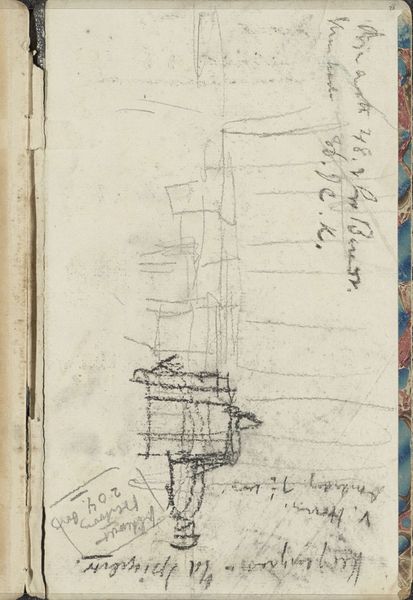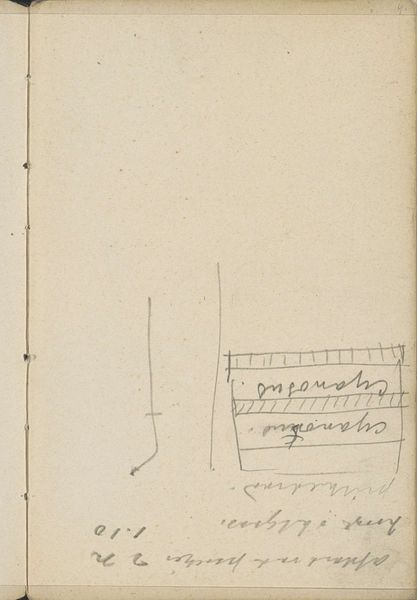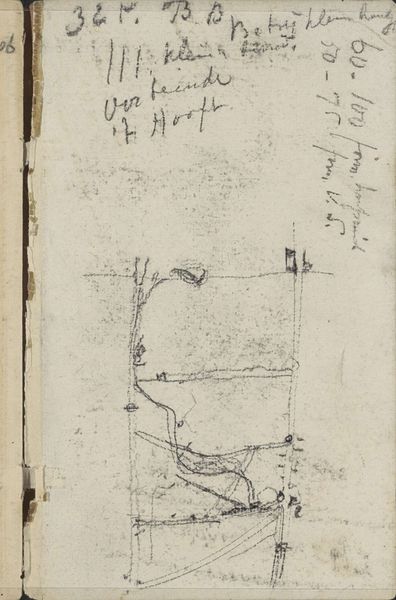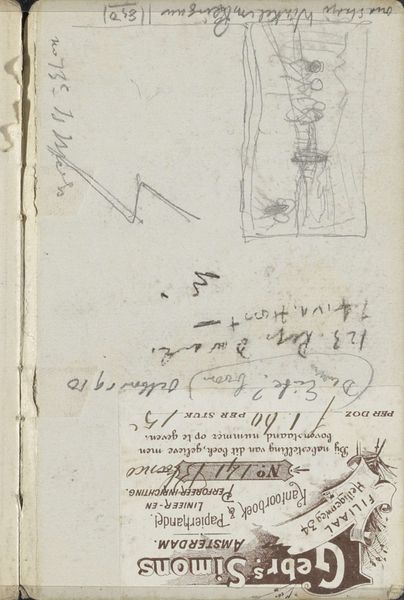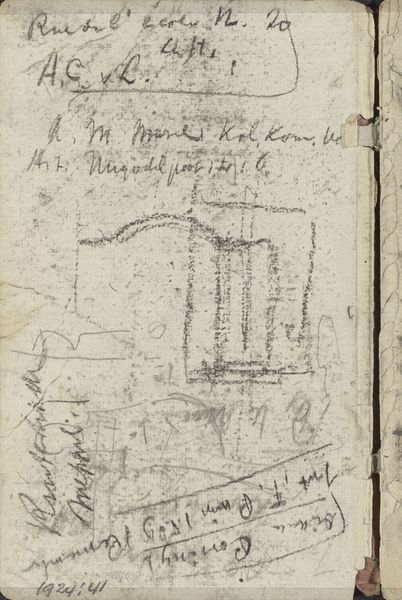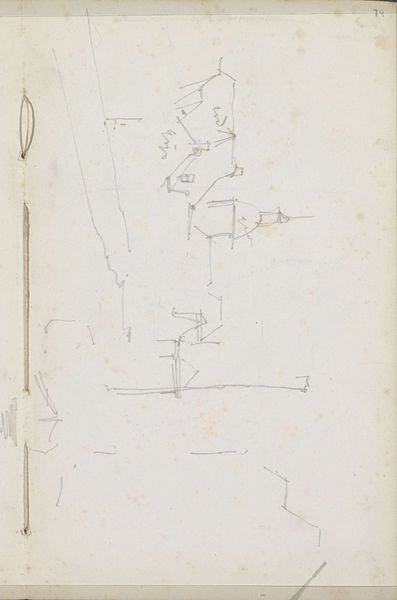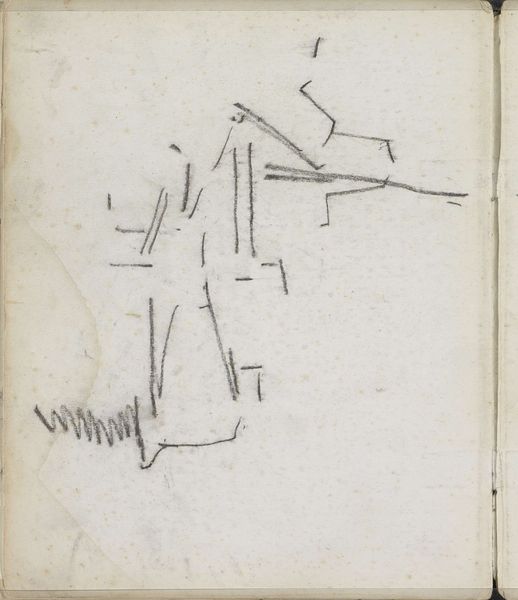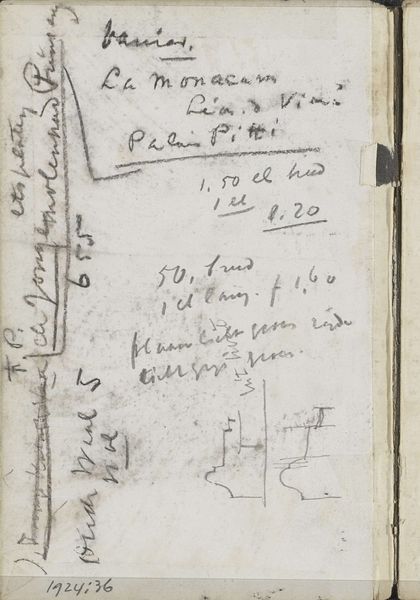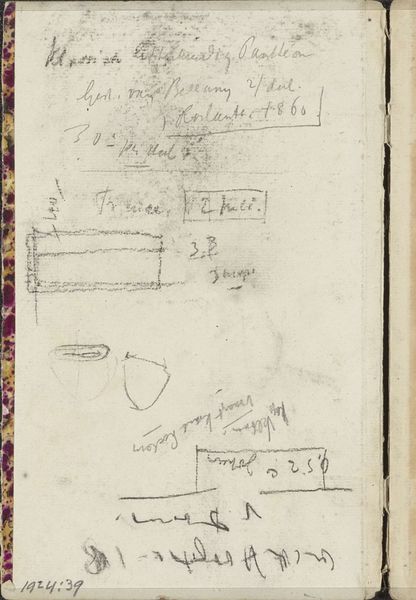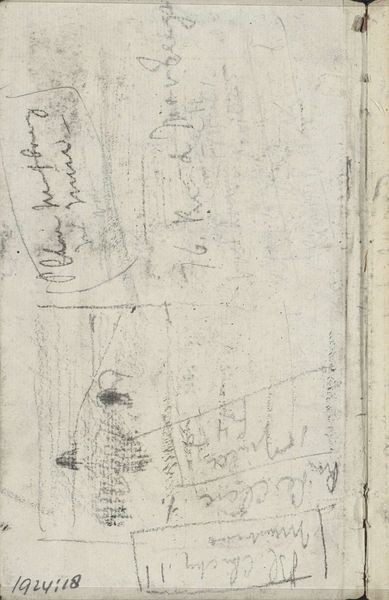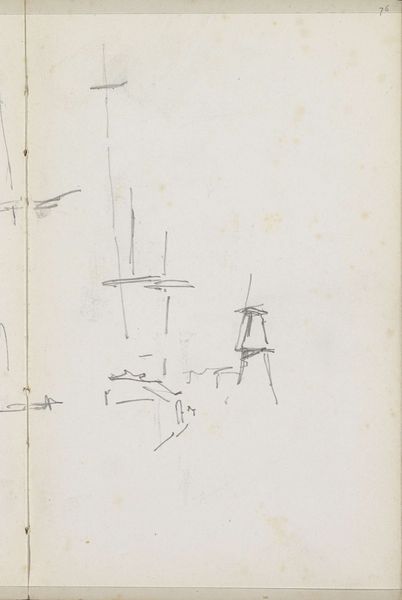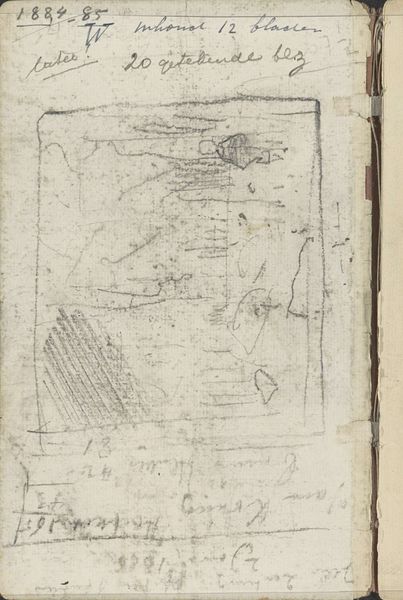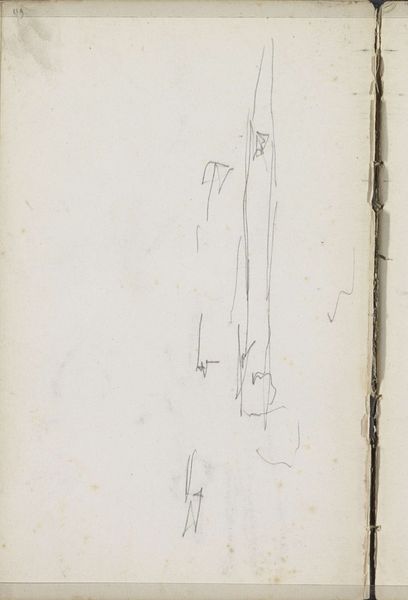
Copyright: Rijks Museum: Open Domain
Curator: Before us is “Studie,” a drawing by George Hendrik Breitner, likely created between 1895 and 1898. It's a pencil and watercolor sketch on paper. What captures your attention initially? Editor: It feels like a fleeting glimpse into something unfinished. There's a real sense of impermanence, like a thought captured before it fully formed. Is that characteristic of the era it was made in? Curator: It certainly reflects the Impressionist pursuit of capturing fleeting moments. But the sketch itself, particularly with these hastily added notes and numbers at the top, speaks of the pragmatic side of artmaking. The symbolic power lies here not in representation but in pure expression, in an aesthetic still raw, not yet refined. It’s the mind at work. Editor: It's also important to situate this 'rawness' within its historical context. Late 19th-century Amsterdam was experiencing massive urban development, tearing down old neighborhoods and erecting new buildings. Could this "Studie" reflect Breitner grappling with the transformation around him? It seems the structure he rendered are either scaffoldings or soon-to-be constructions, that his focus is with the idea of progress or destruction. Curator: That’s a compelling interpretation, especially if the rapid marks symbolize fleeting realities and impermanence caused by quick societal growth and transformations. The artist’s attempt could be related to record them as is and keep memory of places threatened by the unstoppable forces of urban progress. Also, the grid structure is really interesting as symbol for progress through mathematical reasoning, Editor: The numerical notations alongside the fragmented image invite me to connect aesthetics and social commentary, especially around themes of urban change. What I do find curious, still, is the apparent focus on structural elements in a drawing—a fascination for architectural stability in the face of pervasive fluidity that has transformed Amsterdam into the global scene we know today. Curator: It seems that in a symbolic dimension he is asking, how much will it change before the city loses its essence? Editor: Precisely, it's not just about what is depicted, but what its image might be revealing of our shared identity and destiny, particularly under disruptive capitalism. It seems this memory has value as long as he holds his sketchbook and pen close by. Curator: Indeed. Looking at Breitner's “Studie”, we realize how much a quick sketch can encapsulate when artistic sensitivity engages pressing social, historical questions and continuity in cultural values and beliefs.
Comments
No comments
Be the first to comment and join the conversation on the ultimate creative platform.
